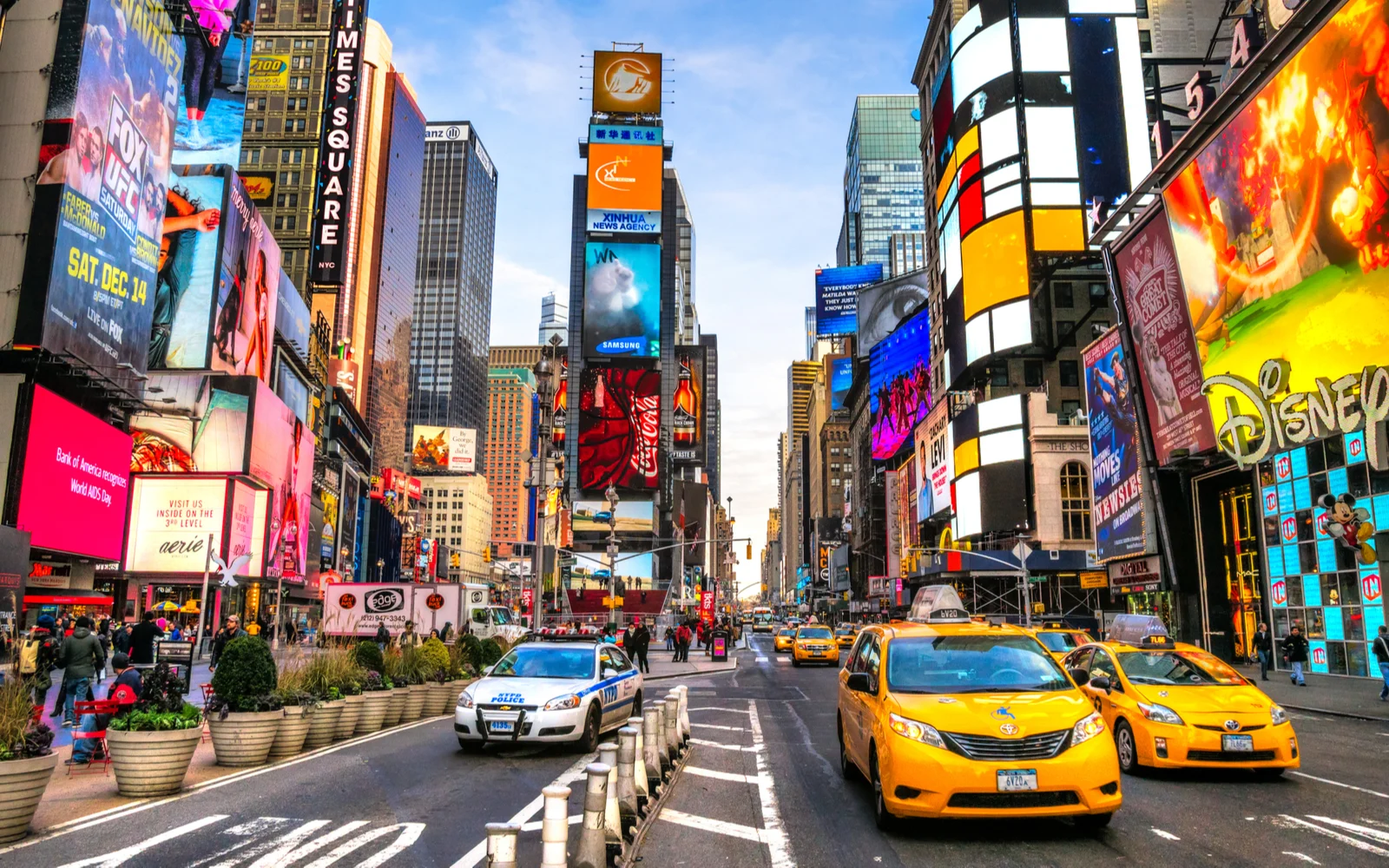What's the best time to visit New York City?
Autumn offers crisp weather, vibrant fall colors, and a packed cultural schedule. From warm September days to cooler November, it’s perfect for enjoying outdoor sights and city walks. Highlights include new Broadway openings, the iconic Village Halloween Parade, and the Macy’s Thanksgiving Day Parade. With fewer rainy days and events like the New York Marathon, fall provides a quintessential NYC experience.
New York City is one of the most popular tourist destinations in the world, and with good reason. There is so much to see and do that visitors could spend months exploring everything.
All visits to New York City should start by exploring the famous landmarks such as the Statue of Liberty and the Empire State Building. NYC is a global capital of culture, from world-famous museums including the Metropolitan Museum of Art to smaller galleries and music venues.
The city is also one of the biggest melting pots in the world with immigrants from all over. So make sure to visit enclaves such as Chinatown to taste delicious international dishes and see countless different cultures.
Planning a trip to New York City can be overwhelming since there is so much to see and do. But don’t worry — we’ll show you the best time to visit and why we love each season; let us be your guide!
Overall Best Time to Visit New York City
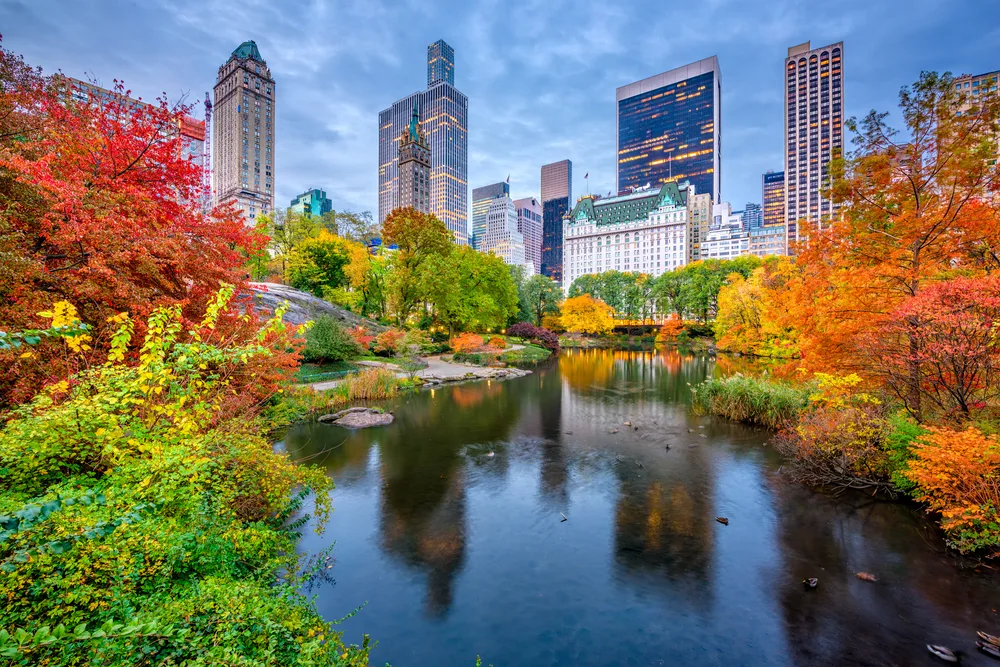
Sean Pavone/Shutterstock
The best time to visit New York City is in the fall, when you can see the city at its best thanks to fall foliage and excellent weather. New York City has a temperate climate with the usual four seasons most of North America enjoys.
Fall is a transitional period, so expect variation throughout the season. Early fall days can be quite warm, although without the sticky humidity of a NYC summer.
Average high temperatures in September are around 76 degrees, while October is a much cooler 65 degrees according to U.S. Climate Data.
November can get quite cold. Autumn has the best weather for spending time out and about, and since most New Yorkers walk everywhere, you’ll want to do the same. Temperatures are mild, not too hot or too cold. Plus, you have the highest chances of sunny weather.
Fall is the season with the fewest rainy days per month. Make sure you head to Central Park or some of the other parks to enjoy the beautiful changing leaves.
There is always something to do in New York City, but the cultural calendar really kicks off in the fall. Many cultural institutions throughout the city start back up after a summer break. Fall is when a lot of new shows open on Broadway after a summer lull.
Autumn also contains two quintessential New York City holidays—Halloween and Thanksgiving. Halloween in the city is frighteningly delightful, with costumed kids frolicking during the day and more adult-oriented events such as the world-famous Village Halloween Parade at night.
Late November brings Thanksgiving, and another world-famous parade—the Macy’s Thanksgiving Day Parade. Visitors should know that by mid-November, many Christmas decorations are already up.
Other popular autumnal events in New York City include:
- West Indian Day Parade (September)
- Feast of San Gennaro (September)
- New York Film Festival (October)
- NYC Wine & Food Festival (October)
- New York Marathon (November)
See All Hotels in New York City
Cheapest Time to Visit New York City
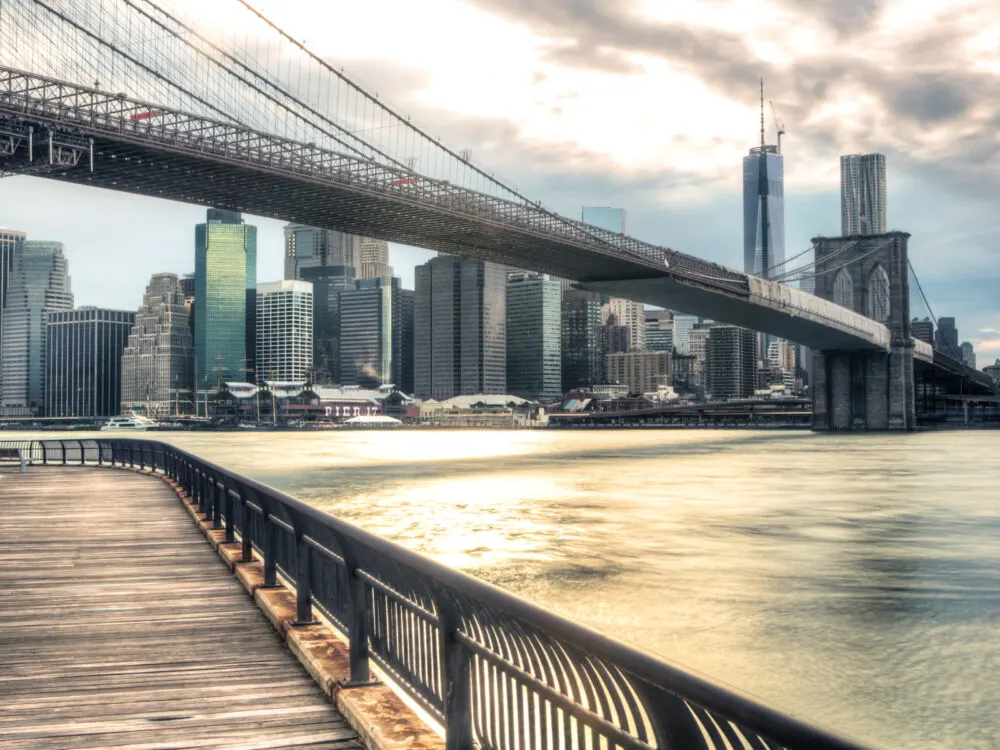
Thiago Leite/Shutterstock
The cheapest time to visit New York City is in late winter (January-February), when you have the highest chance of snagging a hotel deal. Make no mistake, winter in New York can get cold.
Average high temperatures in January are around 30-34 degrees Fahrenheit, so barely above freezing. Expect snow and slush, which can affect your travel plans.
However, the benefit is that once the madness of Christmas and New Year’s is over, then hotel prices drop along with lower demand. This is absolutely the slowest season in New York City, which means you can also score deals.
Even top hotels offer deals of 35-50% off, so you may even be able to sleep in the lap of luxury. January and February are the least expensive months for domestic flights within the United States, so traveling to NYC will cost less.
For international visitors, the most affordable time to fly into JFK International Airport is January. Flights always cost less mid-week.
Least Busy Time to Visit New York City
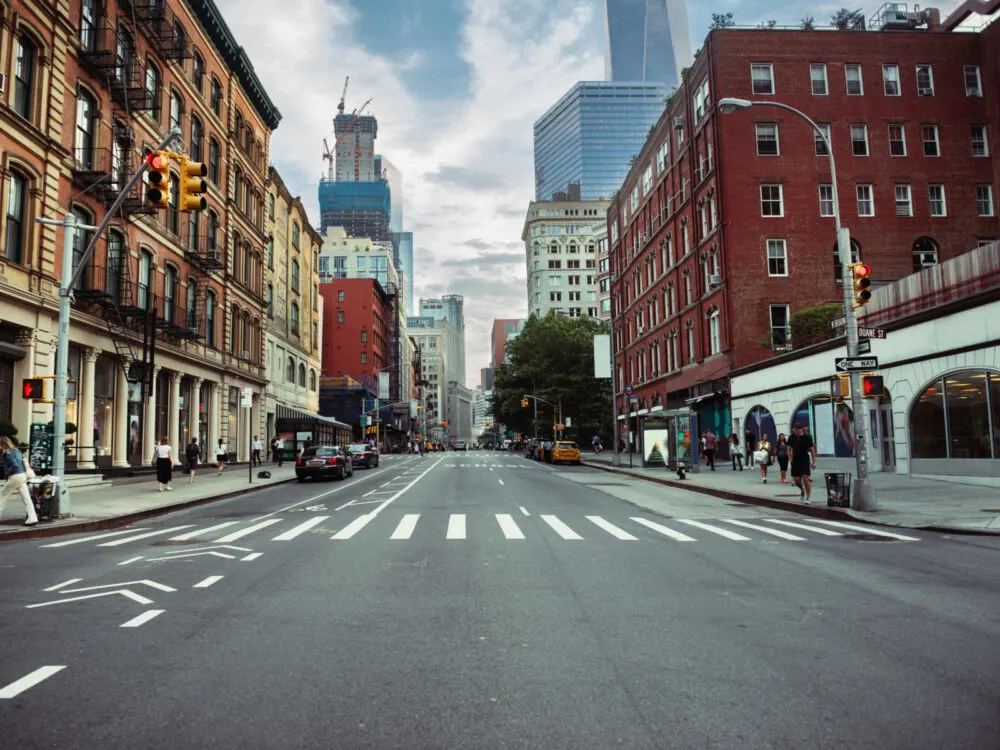
Nick Starichenko/Shutterstock
The absolute least busy time to visit New York City is during the late winter, but you can also beat the crowds by visiting in spring. In January and February, New York City is the closest that it gets to emptying out.
According to this chart comparing pedestrian traffic in Times Square, the fewest visitors come in January and February.
Although you’ll need to bundle up, you’ll be able to enjoy many museums, attractions, and restaurants without waiting in long lines. If you want to visit New York City but avoid both the crowds and the snow, then spring is New York’s best-kept secret.
The visitors start coming back, but nowhere near summer’s peak levels. Temperatures are more manageable, with average highs in April at around 60 degrees.
The only downside is that spring is the most unpredictable season in New York City, with days of near-freezing temperatures coming right on the heels of a day of pleasant sunshine. It’s also the rainiest season.
If you’re willing to try your luck, you may experience some glorious spring days, perfect for exploring outdoor attractions such as the Statue of Liberty. New York is surprisingly green for such a big city, and its many parks and botanical gardens blossom in the spring.
You can even see cherry blossoms in bloom—the Brooklyn Botanical Garden even has its own Cherry Blossom Festival. Spring has fewer big events than other seasons in New York City, but there’s plenty to do for revelers.
Besides the standard repertoire of Broadway shows, Lincoln Center operas and concerts, and gallery openings, there is also a lively nightlife scene.
Things get particularly rowdy around St. Patrick’s Day, a celebration of the Irish community that built New York. The parade dates back to 1762, making it one of the oldest in the world.
Worst Time to Visit New York City
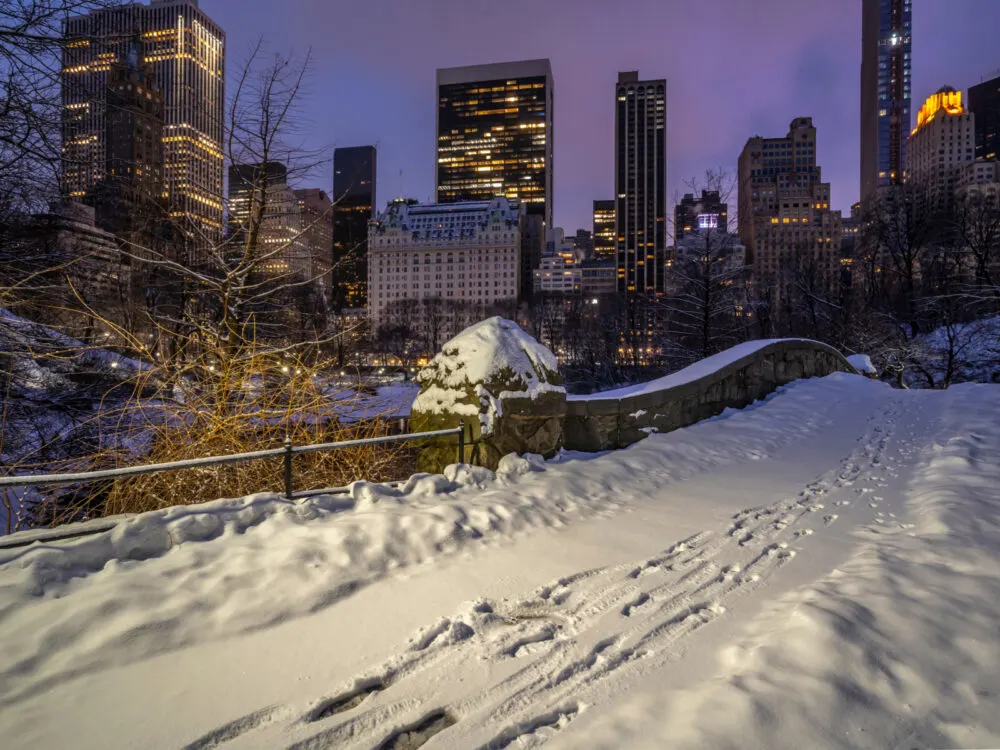
John A. Anderson/Shutterstock
While there are many of great times to go, many residents agree that the worst time to visit NYC is in the summer due to the humid weather and high crowds.
Many visitors are surprised to find out how hot New York City summers can actually get. Average temperatures in July are about 85 degrees, but there are many days that are hotter. Due to the high humidity, the heat feels even more oppressive.
Summer is rainy and humid, and NYC can also get hit by strong tropical storms, especially towards the end of the season. The summers are also getting worse. In 2020, New York was officially reclassified as a city with a humid subtropical climate as opposed to a continental climate.
Taking the subway is particularly unbearable, as some underground platforms register temperatures over 100 degrees.
To make things worse, summer is the most crowded season in New York City. Expect throngs of visitors wherever you go, crowds so thick in Times Square that you can barely move, and of course, sky-high hotel prices.
This being New York City, things aren’t all bad about visiting any time. To cool off, you can always head to one of the city beaches, such as Coney Island.
Summer is also the peak events season. Central Park puts on Shakespeare in the Park and the SummerStage concert series, while Bryant Park’s Picnic Performances series puts on free music and dance shows.
Summer is when the city’s top festivals take place, such as:
- NYC Pride (June)
- Coney Island Mermaid Parade (June)
- Fourth of July Fireworks (July)
New York City by Month: Climate & Activities
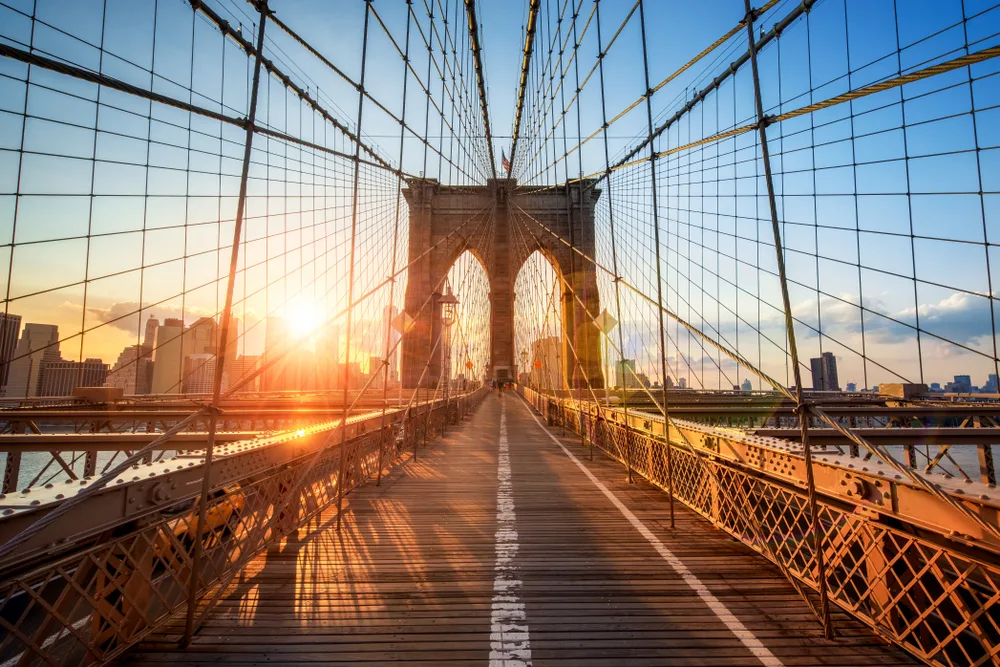
Mapman/Shutterstock
Still unsure about the best time to visit New York City? Take a look at our summary of the weather and climate by month below:
January
Winter sets in, and temperatures in January range from 26-38°F. The cityscape transforms into a winter wonderland, and visitors can enjoy holiday decorations, ice skating in Central Park, and Broadway shows.
February
Similar to January, February maintains cold temperatures ranging from 27-40°F. It’s an excellent time for indoor activities like exploring museums, attending cultural events, and taking advantage of winter sales.
March
As winter transitions to spring, temperatures vary from 34-48°F. March brings a sense of renewal, with budding trees in Central Park and outdoor events like the St. Patrick’s Day Parade.
April
Spring blooms with temperatures between 43-59°F. Cherry blossoms adorn the city, and outdoor activities, such as walking the High Line or exploring botanical gardens, become popular.
May
New York City in May sees temperatures ranging from 53-69°F, marking the onset of warmer weather. Outdoor markets, rooftop bars, and events like Fleet Week contribute to the lively atmosphere.
June
Summer arrives with temperatures between 63-78°F. The city comes alive with outdoor concerts, street festivals, and activities in parks, including picnics and kayaking on the Hudson River.
July
In July, NYC maintains warm temperatures from 68-83°F. Independence Day celebrations, open-air concerts, and the vibrant energy of Coney Island make it a quintessential summer experience.
August
Temperatures in August range from 67-82°F. It’s a great time to explore neighborhoods, attend outdoor film screenings, and take advantage of restaurant weeks showcasing the city’s diverse cuisine.
September
As summer transitions to fall in New York City, temperatures vary from 60-75°F. September offers pleasant weather for strolling through Central Park, attending fashion week events, and enjoying outdoor dining.
October
Fall foliage begins with temperatures ranging from 50-64°F. October is perfect for admiring the changing colors in city parks, attending Halloween events, and savoring seasonal treats.
November
Cool temperatures between 40-54°F mark the arrival of fall. Thanksgiving parades, holiday markets, and the lighting of the Rockefeller Center Christmas Tree kick off the festive season.
December
In the winter, temperatures ranging from 31-43°F. The city sparkles with holiday lights, window displays, and festivities, making December a magical time for visitors to experience the charm of New York City.
Frequently Asked Questions
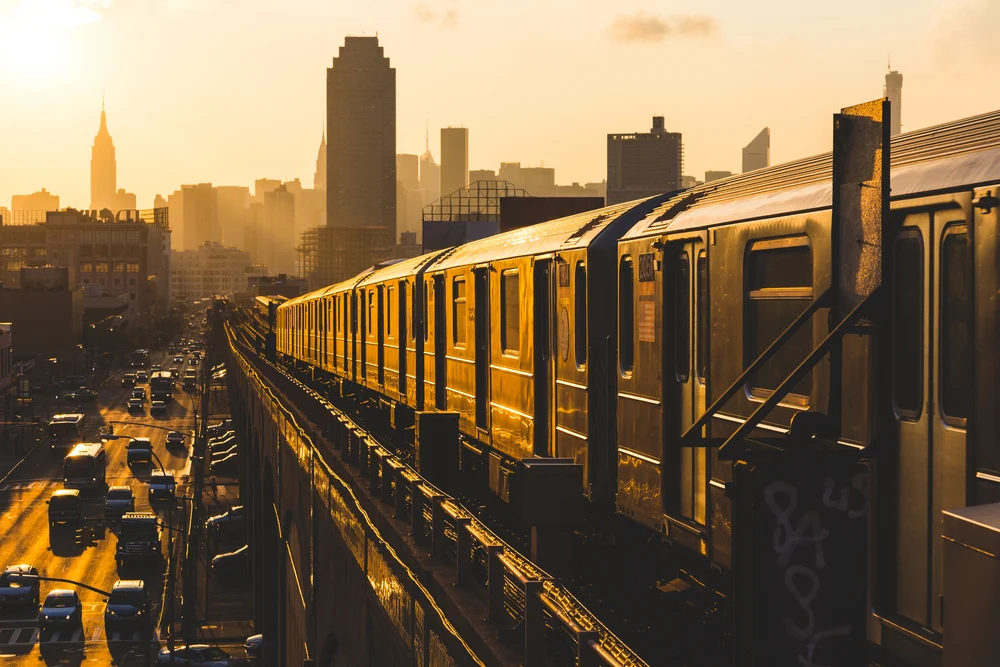
William Perugnini/Shutterstock
Here are a few questions people commonly ask about visiting New York City:
What are the best months to visit New York City?
The best months to visit New York City are May and October, which have the mildest weather and plenty of events.
How many days do you need in New York?
You need to spend at least five days to see the major attractions in New York City, and far longer if you want to get a taste of how the city lives.
What time of year should I go to New York?
Autumn is the best time of year to go to New York thanks to the sunny weather and busy cultural calendar.
What are the most expensive months to visit New York?
December and June-August are the most expensive months to visit New York because there are the most visitors.
What is the least expensive month to go to New York City?
February is the least expensive month to visit NYC because it has no major holidays and the weather is cold, driving demand and prices down.
So, What’s the Best Time to Visit New York City?
There is no bad time to visit New York City, but the best time to visit depends on what you’re looking for. Autumn is the best overall time to visit, but bargain hunters should come in January-February and festival lovers will enjoy summer.
So, with so much to see and do and plenty of amazing times to visit, what are you waiting for — book your trip today and experience for yourself all that NYC has to offer. Happy travels!



